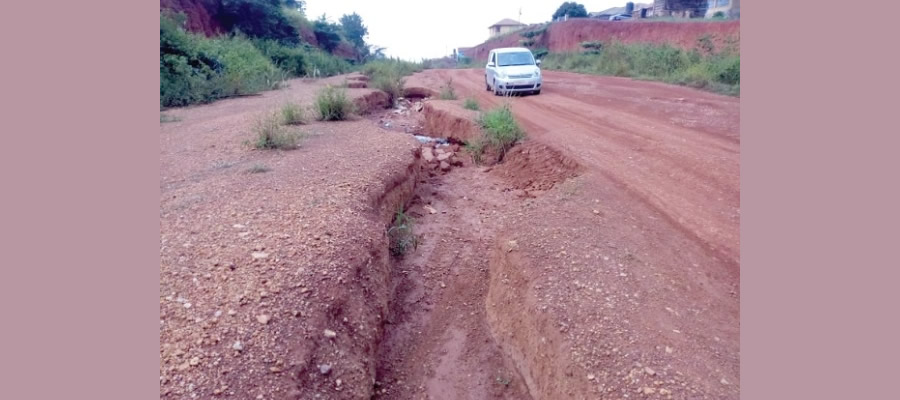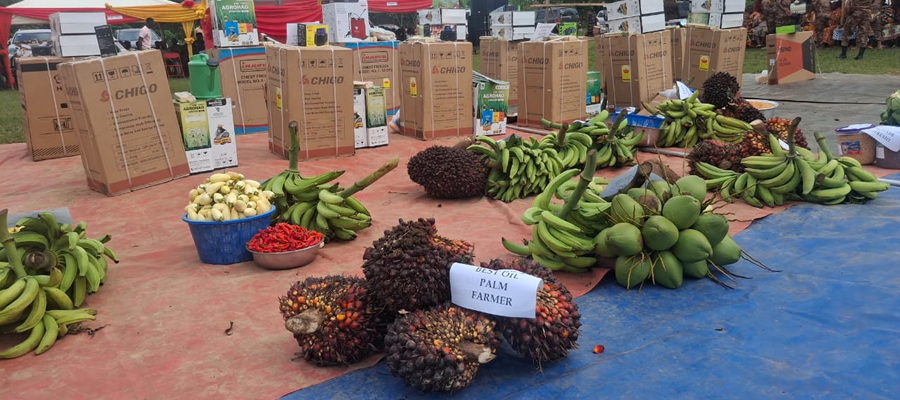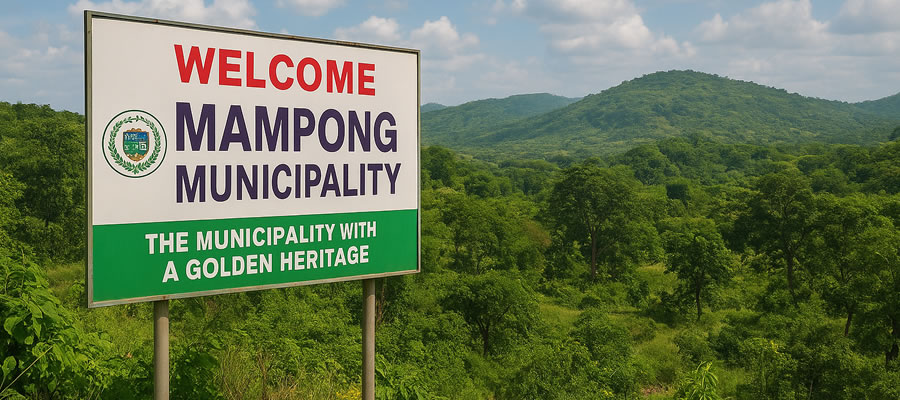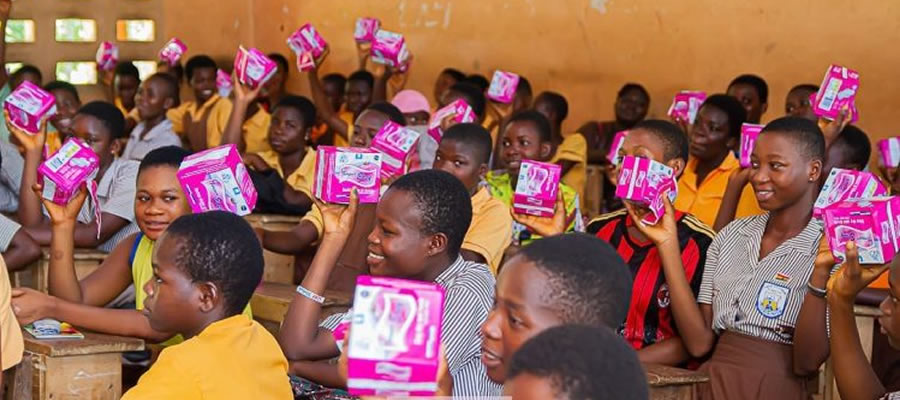
Bathing and Toilet Facilities
Bathing Facility
Table 12.12 shows the bathroom facilities in dwelling units in the region, by district. The most common bathing facility is shared separate bathroom in the same house (44.5%), followed by own bathroom for exclusive use (24.9%) and shared open cubicle (14.1%). These three types account for 83.5 percent of bathing facilities in dwellings units.
The proportion of dwelling units that share a bathroom in the same house is highest in Kumasi Metropolis (51.6%), followed by Kwabre East (51.4%). In 11 districts, the proportions are between 40.0 percent and 50.0 percent. In nine districts, the proportions are between 30.0 percent and 40.0 percent. In the remaining five districts, the proportions are below 30.0 percent, with the lowest proportion in Amansie Central 23.4%). The proportion of dwelling units that has own bathroom for exclusive use is highest in Bosome Freho (36.5%), followed by Amansie Central (36.1%), Adansi South (30.7%) and Asante Akim South (30.0%). In 21 districts, the proportions are between 20.0 percent and 30.0 percent. In the remaining two districts, the proportions are below 20.0 percent, namely, Mampong Municipal (18.3%) and Offinso Municipal (16.7%).
The highest proportion of dwelling units that share open cubicle for bathing is in Ejura-Sekyedumase (20.7%). In 14 districts, the proportions are between 15.0 percent and 20.0 percent. In nine districts, the proportions are between 10.0 percent and 15.0 percent. In the remaining three districts, the proportions are below 10.0 percent, namely, Amansie Central (9.8%) and Sekyere Central (9.6%). The proportion of dwelling units that uses open space around house for bathing is highest in Sekyere Afram Plains (17.1%). In In six districts, the proportions are above 10.0 percent. In 17 districts, the proportions are between 5.0 percent and 10.0 percent. In the remaining three districts, the proportions are below 5.0 percent, namely, Kwabre East (4.9%), Kumasi Metropolis (3.3%) and Obuasi Municipal (2.8%).
Among dwelling units that use private open cubicle for bathing, the highest proportion is in Atwima Mponua (13.4%). In four other districts, the proportions exceed 10.0 percent. In 20 districts, the proportions are between 5.0 percent and 10.0 percent. In the remaining two districts, the proportions are below 5.0 percent, namely, Obuasi Municipal (4.1%) and Kumasi Metropolis (2.9%). The proportion of households that use bathroom in another house is highest in Amansie Central (11.7%), followed by Amansie West (10.3%). In five districts, the proportions are higher than 5.0 percent and in the remaining 20 districts, the proportions are below 5.0 percent, with the lowest proportions in Kumasi Metropolis and Kwabre East (1.0% each), followed by Afigya Kwabre (1.8%).
Appendix Table 12.12 shows the bathroom facilities in dwelling units, by district and type of locality. In urban areas, the dominant bathing facility in dwelling units is shared separate bathroom in the same house (51.3%), followed by own bathroom for exclusive use (24.0%) and shared open cubicle (14.1%). The proportions of the other bathroom facilities are relatively small. The pattern of proportions of bathing facilities that rural dwelling units use is similar to that in urban dwelling units but the proportions differ substantially in two situations. Whereas, the proportion of urban dwelling units that uses shared separate bathroom in the same house is 51.3 percent, it is 32.8 percent in rural dwelling units; and while in urban dwelling units the proportion that uses open space around house as bathroom is 3.7 percent, it is 10.0 percent in rural dwelling units.
Toilet Facility
Table 12.13 shows the toilet facilities used by households in districts and locality. In the Ashanti Region, 50.0 percent of dwelling units have private toilet facilities that include WC (23.2%), pit latrine (17.8%), KVIP (8.7%) and bucket/pan latrine (0.3%). The households in dwelling units that use public toilets are 43.3 percent, and 6.3 percent have no toilet facility. In the districts, the highest proportion of households in dwelling units that uses public toilets is highest in Offinso North (63.7%) , followed by Amansie Central (63.0%). In eight districts, the proportions are between 50.0 percent and 60.0 percent. In 10 districts, the proportions are between 40.0 percent and 50.0 percent. In the remaining seven districts, the proportions are below 40.0 percent, with the lowest proportion in Afigya Kwabre (34.7%).
The proportion of dwelling units that has private WC is highest in Kumasi Metropolis (40.1%), followed by Obuasi Municipal (26.5%). In six districts, the proportions are between 10.0 percent and 20.0 percent. In seven districts, the proportions are between 5.0 percent and 10.0 percent. In the remaining 12 districts, the proportions are below 5.0 percent, with the lowest proportion in Atwima Mponua (0.7%), followed by Ahafo Ano South (1.6%) and Amansie Central (1.7%). Among dwelling units that have private pit latrine, the highest proportion is in Ahafo Ano North (35.7%), followed by Adansi South (31.7%), Adansi North (30.7%) and Asante Akim South (30.4%). In 19 districts, the proportions are between 20.0 percent and 30.0 percent. In the remaining four districts, the proportions are below 20.0 percent, namely, Offinso North (18.9%), Ejura-Sekyedumase (11.7%), Kumasi Metropolis (10.7%) and Obuasi Municipal (8.9%). The proportion of dwelling units that have private KVIP is highest in Asante Akim North Municipal (21.3%), followed by Sekyere East (18.5%) and Asante Akim South (18.2%). In seven districts, the proportions exceed 10.0 percent. In the remaining 17 districts, the proportions are between 5.0 percent and 10.0 percent, with the lowest proportion in Amansie Central and Ahafo Ano South (5.7% each), followed by Ejura-Sekyedumase (5.9%) and Offinso Municipal (6.5%).
Appendix Table 12.13 shows the toilet facilities available to dwelling units by district and locality. In urban areas, 55.6 percent of the dwelling units have private toilet facilities compared with 40.1 percent of rural dwelling units. The private toilet facilities in urban dwelling units include WC 33.6 percent, pit latrine 12.9 percent, KVIP 8.8 percent and bucket/pan latrine 0.3 percent. The private toilet facilities in the rural dwelling units include private pit latrine 26.3 percent, private KVIP 8.6 percent, private WC 5.0 percent and private bucket/pan latrine 0.2 percent. Among urban dwelling units, 3.4 percent have no access to any toilet facility compared with 11.4 percent of rural dwelling units.
Waste Disposal
Solid Waste
Table 12.14 shows the methods that households in dwelling units use to dispose of solid waste, by district. Three main methods are used to dispose of solid waste in the region as follows: 41.9 percent by dumping in open public places, 35.4 percent by putting it in containers in public places and 9.1 percent have it collected. The three methods are used by 86.4 percent of dwelling units.
In the districts, the highest proportion of households in dwelling units that dump solid waste in open public places is in Amansie West (88.1%), followed by Amansie Central (82.2%). In six districts, the proportions are between 70.0 percent and 80.0 percent. In 11 districts, the 174 proportions are between 60.0 percent and 70.0 percent. In the remaining eight districts, the proportions are below 60.0 percent, with the lowest proportion in Kumasi Metropolis (16.3%), followed by Obuasi Municipal (29.4%) and Ejura-Sekyedumase (42.6%). The proportion of households in dwelling units that dumps solid waste in containers in public places is highest in Kumasi Metropolis (59.4%, followed by Obuasi Municipal (48.8%). In 16 districts, the proportions are between 10.0 percent and 30.0 percent. In the remaining six districts, the proportions are below 10.0 percent, with the lowest in Amansie West (2.0%), followed by Atwima Mponua (2.8%) and Ahafo Ano South (5.1%).
The proportion of households in dwelling units that dumps solid waste indiscriminately is highest in Sekyere Afram Plains (17.0%) In seven districts, the proportions are 10.0 percent and higher. In 11 districts, the proportions are between 5.0 percent and 10.0 percent. In the remaining seven districts, the proportions are below 5.0 percent with the lowest proportion in Kumasi Metropolis (1.9%). In dwelling units where solid waste is collected, the proportion is higher in Kumasi Metropolis (16.3%), followed by Obuasi Municipal (12.0%). In the remaining 24 districts, the proportions are below 5.0 percent with the lowest proportion in Atwima Mponua, Amansie West, Bekwai Municipal and Ahafo Ano South (0.7% each), followed by Asante Akim South (0.8%). The proportion of dwelling units where households bury solid waste is highest in Bosomtwi (6.1%), followed by Sekyere Central (6.0%) and Asante Akim North Municipal (5.0%). In the remaining 24 districts, the proportions are below 5.0 percent with the lowest proportion in Obuasi Municipal (0.9%), followed by Kumasi Metropolis (1.5%) and Offinso Municipal (1.7%).
Appendix Table 12.14 shows the methods that households use to dispose of solid waste, by district and type of locality. In urban areas, the pattern of solid waste disposal is similar to that of the region as a whole. The proportion of dwelling units from where solid waste is dumped in open public places is 52.9 percent, dumping in containers in public places is 23.8 percent, collection is 13.2 percent and burning is 5.2 percent. Thus, 95.1 percent of the urban dwelling units use these four waste disposal methods.
In rural areas, 73.5 percent of dwelling units dispose of solid waste in open space public dump compared with 23.8 percent of urban dwelling units. The proportion of the rural dwelling units from where solid waste is dumped indiscriminately is 9.4 percent compared with 2.4 percent of urban dwelling units. The proportions of rural households that burn solid waste (5.5%) and bury solid waste (3.8%) are higher than those in urban households, 5.2 percent and 2.1 percent, respectively. The proportions are higher in urban households than those of rural households where solid waste is dumped in public container, 52.9 percent and 5.0 percent, respectively; and where solid waste is collected, 13.2 percent and 1.8 percent, respectively.
Liquid waste disposal
Table 12.15 shows liquid waste disposal methods used in dwelling units by district. Liquid waste is disposed of through four main methods that account for 94.0 percent of total disposal – namely, thrown onto compound (29.4%), thrown onto street/outside (23.0%), thrown into gutter (21.8%) and through drainage system into gutter (19.8%). In the districts, the proportion of households that throws liquid waste onto compound is highest in Offinso North (54.8%). In five districts, the proportions exceed 50.0 percent. In nine districts, the proportions are between 40.0 percent and 50.0 percent. In another nine districts, the proportions are between 30.0 percent and 40.0 percent. In the remaining three districts, the proportions are below 30.0 percent, namely, Kwabre East (29.1%), Obuasi Municipal (15.7%) and Kumasi Metropolis (14.6%).
Offinso Municipal has the highest proportion of households (46.7%) that throws liquid waste onto streets/outside. In six districts, the proportions exceed 40.0 percent. In 17 districts, the proportions are between 30.0 percent and 40.0 percent. In the remaining four districts, the proportions are below 30.0 percent, namely, Sekyere Central (28.2%), Obuasi Municipal (16.5%) and Kumasi Metropolis (7.5%). The proportion of households that throws liquid waste into gutters is highest in Obuasi Municipal (34.8%), followed by Kumasi Metropolis (33.2%). In 10 districts, the proportions are between 10.0 percent and 20.0 percent. In 12 districts, the proportions are between 5.0 percent and 10.0 percent. In the remaining three districts, the proportions are below 5.0 percent, namely, Ahafo Ano south (4.9%), Offinso North (4.3%) and Atwima Mponua (4.2%). Among those disposing of liquid waste through drainage system into a gutter, the proportion is highest in Kumasi Metropolis (35.9%), followed by the Obuasi Municipal (26.9%). In three districts, the proportions exceed 10.0 percent. In six districts, the proportions are between 5.0 percent and 10.0 percent. In the remaining majority of 15 districts, the proportions are below 5.0 percent, with the lowest proportion in Offinso North (1.3%), followed by Atwima Mponua (1.7%) and Asante Akim South (2.0%). The proportion of dwelling units that are connected to sewerage system for disposal of liquid waste is highest in Kumasi Metropolis (5.0%), followed by Obuasi Municipal (3.7%) and Ahafo Ano North (3.2%). In 16 districts, the proportions are between 1.0 percent and 3.0 percent. In the remaining eight districts, the proportions are below 1.0 percent, with the lowest proportion in Asante Akim South (0.3%).
Appendix Table 11.15 shows the liquid waste disposal methods used in the dwelling units by district and type of locality. In urban areas, four methods of liquid waste disposal are used in 92.2 percent of dwelling units as follows: 29.9 percent thrown into gutter, 29.4 percent connected to drainage system, 18.8 percent thrown onto compound and 14.1 percent thrown onto street/outside.
Three methods of liquid waste disposal are used in 93.7 percent of rural dwelling units as follows: 47.8 percent thrown onto the compound, 38.3 percent thrown onto street/outside and 7.6 percent thrown into gutter.
Sources of Drinking Water
Table 12.16 shows that five sources of drinking water are used by households in 88.9 percent of dwelling units in the region, namely, borehole / pump /tube well (30.9%), pipe-borne water inside dwelling unit (22.0%), pipe-borne water outside dwelling unit (18.7%), public tap / standpipe (10.1%) and protected well (7.2%). In the districts, the proportion of households in dwelling units that use borehole / pump / tube well is highest in Amansie Central (71.1%). In four districts, the proportions are between 60.0 percent and 70.0 percent and in 13 districts, the proportions are between 40.0 percent and 60.0 percent. In the remaining nine districts, the proportions are below 40.0 percent, with the lowest proportion in Kumasi Metropolis (12.2%).
The proportion of households with pipe-borne water inside dwelling is highest in Kumasi Metropolis (42.3%), followed by Mampong Municipal (22.6%). In six districts, the proportions are between 5.0 percent and 20.0 percent. In the remaining 19 districts, the proportions are below 5.0 percent, with the lowest proportion in Atwima Mponua, Amansie West, Amansie Central (0.7% each), Adansi South and Sekyere Afram Plains (0.8% each) and Adansi North (1.0%).
Among households that use pipe-borne water outside the dwelling, the proportion is highest in Offinso North (30.0%). In five districts, the proportions are between 20.0 percent and 30.0 percent. In 10 districts, the proportions are between 10.0 percent and 20.0 percent. In the remaining 11 districts, the proportions are below 10.0 percent, with the lowest proportion in Sekyere Afram Plains (3.7%), followed by Adansi South (4.2%).
Bekwai Municipal has the highest proportion of households that use public tap / standpipe as the source of drinking water, followed by Ejura-Sekyedumase (21.1%). In 16 districts, the proportions are between 10.0 percent and 20.0 percent. In the remaining nine districts, the proportions are below 10.0 percent, with the lowest proportion in Sekyere Central (3.8%), followed by Sekyere Afram Plains (4.0%).
Protected well is used by highest proportion of households in Kwabre East (18.2%), followed by Bosumtwi (18.1%). The proportion exceeds 10.0 percent in four districts. In nine districts, the proportions are between 5.0 percent and 10.0 percent. In the remaining 12 districts, the proportions are below 5.0 percent, with the lowest proportion in Offinso North (0.9%), followed by Mampong Municipal and Sekyere Afram Plains (1.2% each).
River / stream as a source of drinking water is used by the highest proportion of households in dwelling units in Sekyere Central (40.8%), followed by Sekyere Afram Plains (37.7%), Offinso North (24.9% and Mampong Municipal (21.1%). In eight districts, the proportions are between 10.0 percent and 20.0 percent. In the remaining 15 districts, the proportions are below 10.0 percent, the lowest proportion being in Kumasi Metropolis (0.1%), followed by Kwabre East (0.2%), Obuasi Municipal (0.4%) and Atwima Nwabiagya (0.8%). Ano North (0.1% each), followed by Atwima Mponua and Ahafo Ano South (0.3% each) and Amansie Central, Offinso Municipal and Ejura-Sekyedumase (0.5%).
Appendix Table 12.16 shows the sources of drinking water for households in dwelling units by district and. In urban areas, households in 91.9 percent of dwelling units obtain drinking water from five sources, namely, pipe-borne inside dwelling (33.3%), pipe-borne outside dwelling (23.6%), bore hole / pump / tube well (16.1%), public tap / standpipe (10.7%) and protected well (8.2%). In the rural areas, 94.1 percent of households in the dwelling units obtain drinking water from five sources, namely, bore hole/ pump / tube well (56.9%), river / stream (12.5%), pipe-borne outside dwelling (10.2%), public tap/standpipe (9.1%) and protected well (5.4%).
Date Created : 7/27/2023 12:00:00 AM












 facebook
facebook
 twitter
twitter
 Youtube
Youtube
 +233 593 831 280
+233 593 831 280 0800 430 430
0800 430 430 GPS: GE-231-4383
GPS: GE-231-4383 info@ghanadistricts.com
info@ghanadistricts.com Box GP1044, Accra, Ghana
Box GP1044, Accra, Ghana